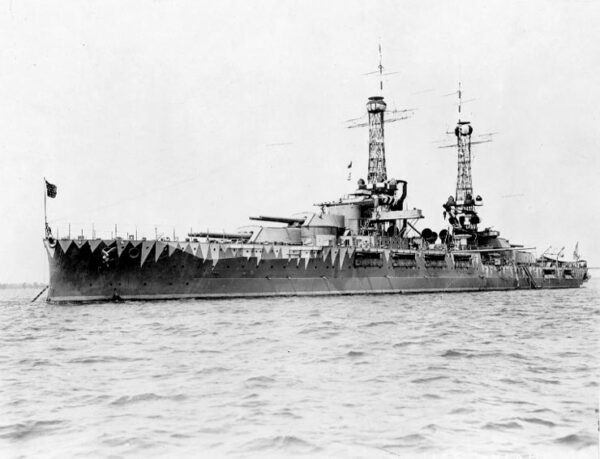
The USS Oklahoma, pictured here, was one of eight U.S. battleships sunk by Imperial Japan during the Attack on Pearl Harbor.
On the morning of Dec. 7, 1941, Imperial Japan conducted a preemptive strike against U.S. naval power in the Pacific in an attempt to prevent the United States from interfering with Japan’s conquest of Southeast Asia. Over 350 Japanese aircraft launched from six carriers participated in the attack, which claimed more than 2,400 American lives and nearly 20 Navy vessels.
A Critical Miscalculation
Despite U.S. losses, the attack plan was ultimately flawed. Imperial Japan largely ignored the key naval assets that the United States would later use to win the resultant war. U.S. aircraft carriers and submarines that played critical roles in later battles were virtually untouched, as Japan mostly focused on destroying battleships.
Japanese leaders assumed the attack would cripple the U.S. Navy, demoralize the American public, and force the United States into a peace agreement that would allow Japan to continue its Pacific campaign with little if any real opposition. Instead, the devastation wrought by Imperial Japanese aircraft ignited public fervor, and the next day, Congress quickly declared war on Japan at the request of President Franklin D. Roosevelt.
U.S. Armed Forces quickly regrouped in California and soon engaged Imperial Japanese forces across the Pacific, ultimately winning the Pacific after decisive victories at Midway, the Philippines, Iwo Jima, Okinawa, and after the atomic bombings of Hiroshima and Nagasaki in 1945.
The Effects of the Attack Are Still Felt
Earlier this year, the remains of Marine Pfc. Walter L. Collier of Burbank were identified. Collier served on the USS Oklahoma, one of eight battleships sunk by Japanese aircraft during the attack.
And late last year, a San Diego post office was renamed in honor of U.S. Navy veteran Roy Chavez, who died in 2018 as the oldest survivor of the attack. Chavez served on the USS Ward, which is believed to have fired the first American shots of World War Two when it sunk a Japanese submarine 25 minutes before Japan launched its attack on the shipyard. The Ward attempted to warn Pearl Harbor, but the message didn’t reach the commanding officer in time.
The attack and war also had significant effects on California, which would eventually produce almost 20% of the United States’ total wartime supplies after near-unprecedented industrial growth.













